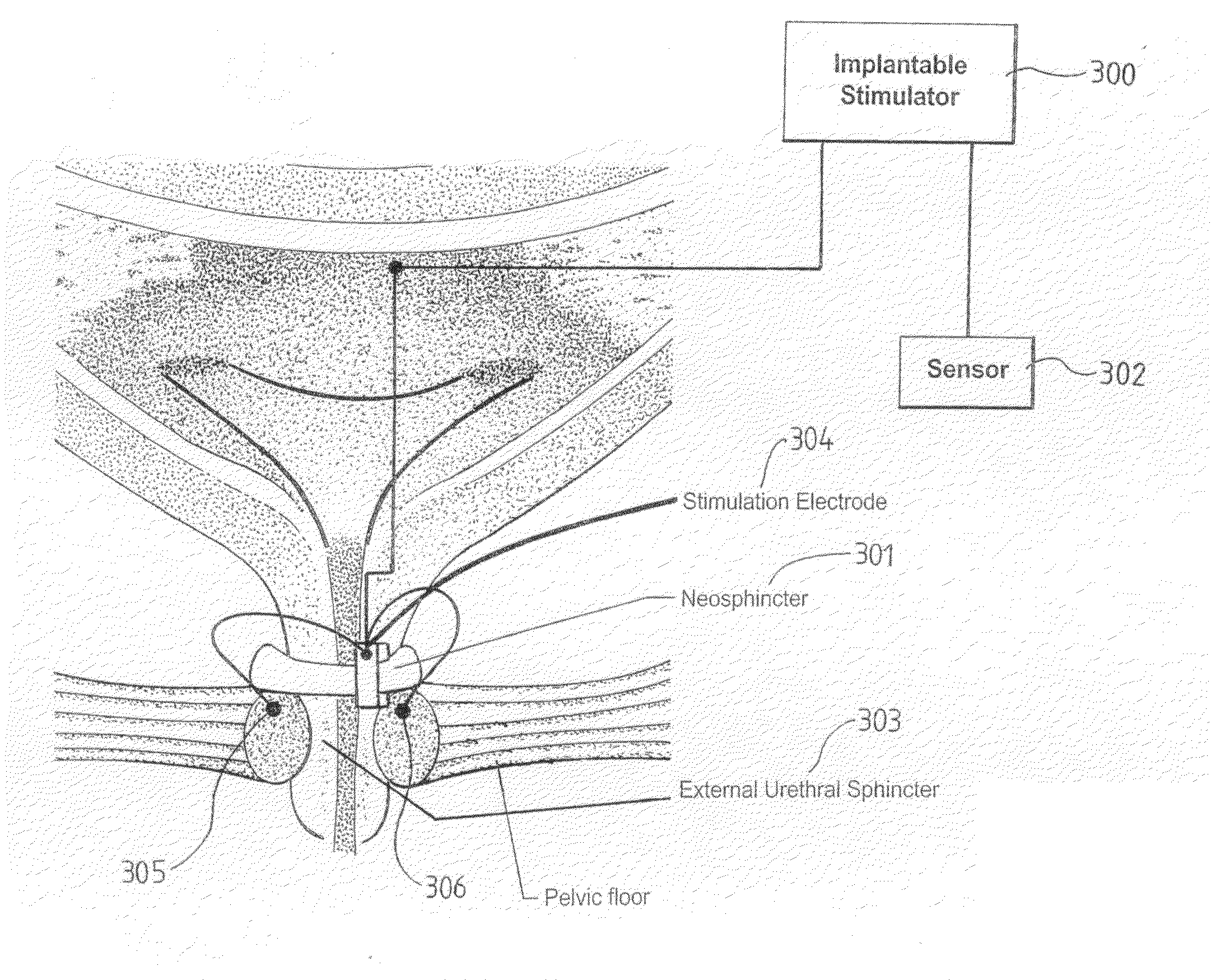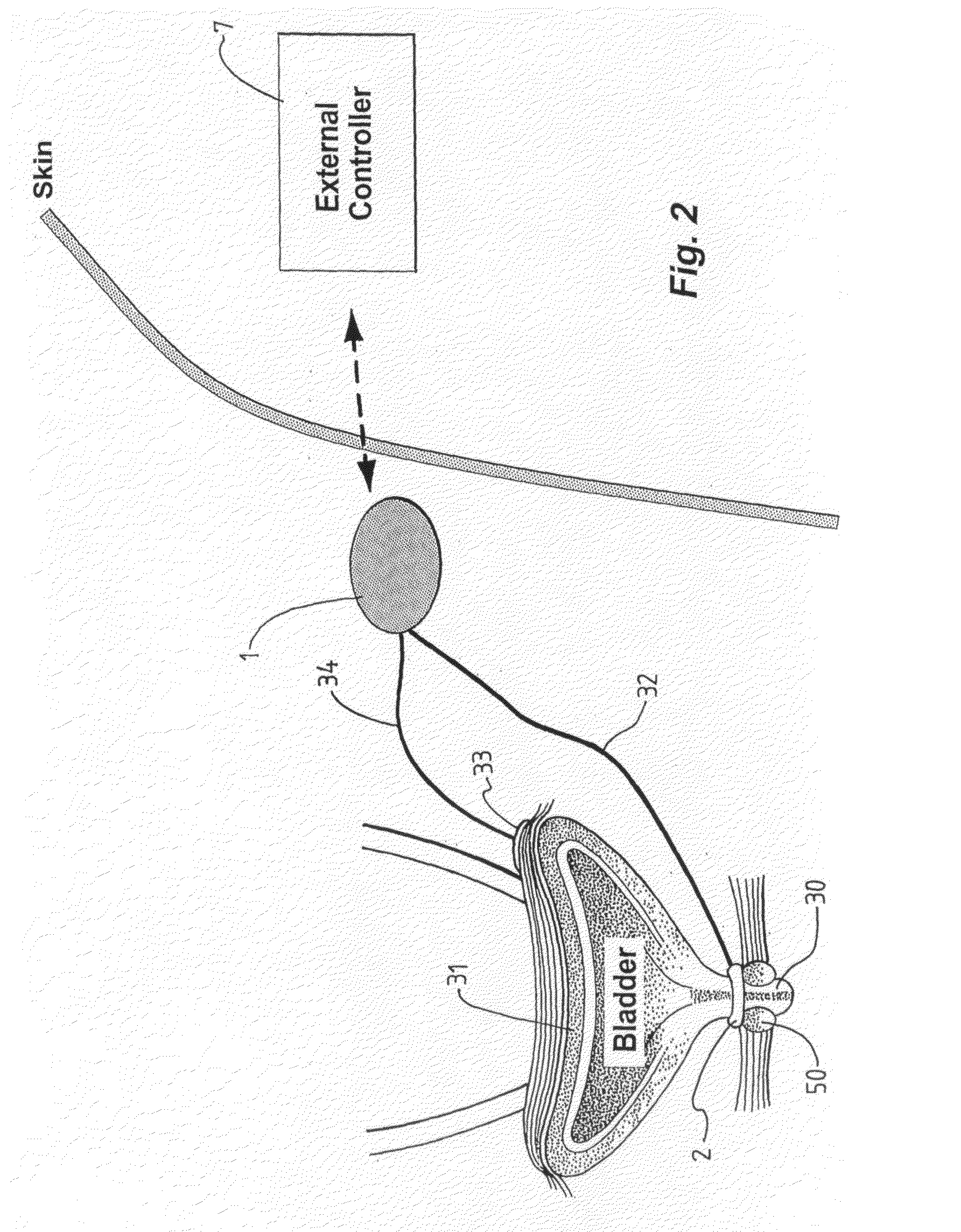Method and Apparatus for Controlling a Bodily Function
a technology of sphincter and sphincter, which is applied in the field of methods and apparatus for controlling the stimulation of the sphincter, can solve the problems of incontinence, no or limited control of the operation of the bladder outlet closure, and less effective effect, so as to achieve the effect of improving the system's performance, improving the optimum stimulation of the bladder outlet, and low stimulation level
- Summary
- Abstract
- Description
- Claims
- Application Information
AI Technical Summary
Benefits of technology
Problems solved by technology
Method used
Image
Examples
Embodiment Construction
[0059]The following description of embodiments of the present invention will be given in relation to a method and apparatus for controlling urinary incontinence. The present invention-is not limited to the control of urinary incontinence, however. The method and apparatus in the present invention may be used for control of other bodily functions.
[0060]FIGS. 1a and 1b are diagrams showing aspects of the female and male urinary anatomy. The urethra in each Figure is denoted by reference numeral 30 and the bladder by reference numeral 31. A smooth muscle neosphincter 2 has been surgically implanted around the urethra 30 in a position close to the bladder 31 or other surgically convenient location. The sphincter 2 has been implanted as in accordance with the disclosure of the above-referenced PCT application.
[0061]Referring to FIG. 2, which shows the female anatomy only (it will be appreciated the same arrangement can be transposed to the male anatomy), in accordance with an embodiment ...
PUM
 Login to View More
Login to View More Abstract
Description
Claims
Application Information
 Login to View More
Login to View More - R&D
- Intellectual Property
- Life Sciences
- Materials
- Tech Scout
- Unparalleled Data Quality
- Higher Quality Content
- 60% Fewer Hallucinations
Browse by: Latest US Patents, China's latest patents, Technical Efficacy Thesaurus, Application Domain, Technology Topic, Popular Technical Reports.
© 2025 PatSnap. All rights reserved.Legal|Privacy policy|Modern Slavery Act Transparency Statement|Sitemap|About US| Contact US: help@patsnap.com



